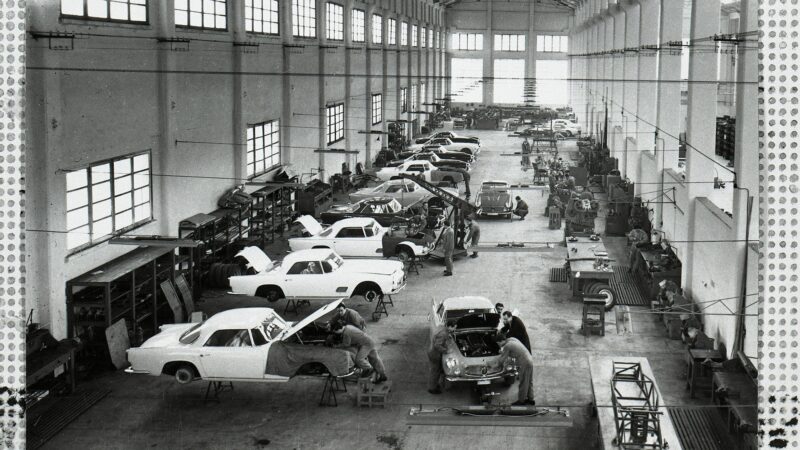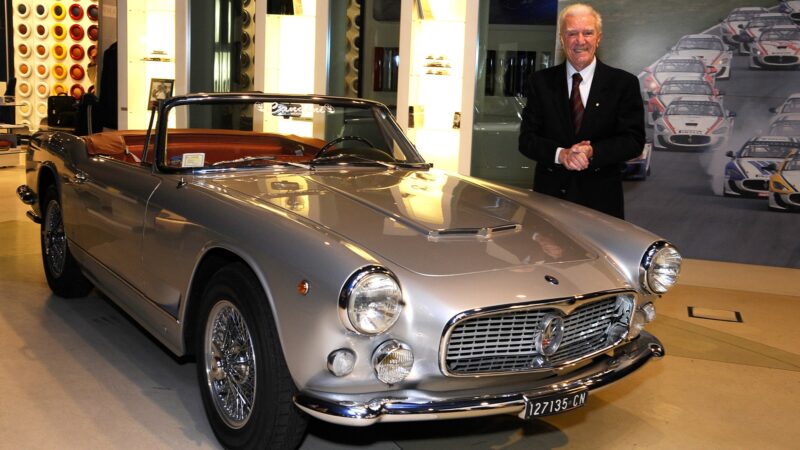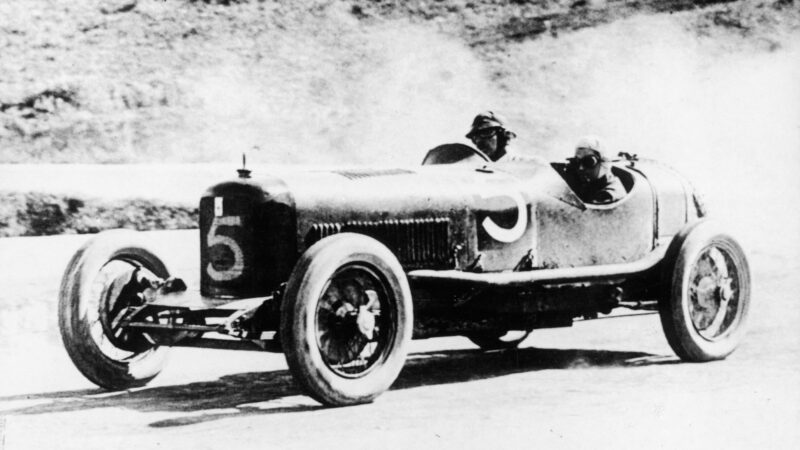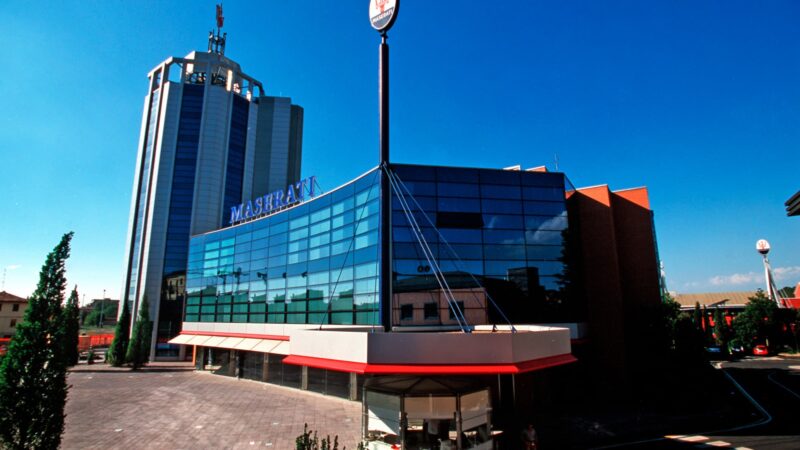Belle macchine: the biography of Maserati
Motor Sport readers have the chance to win one of four copies of the award-winning marque biography Maserati: The Family Silver. Author Nigel Trow explains how he came to write its captivating history

The Maserati team before the 1931 French Grand Prix at Montlhéry, which was held over 10 hours. From left, the 26Ms of Clement Biondetti/Luigi Parenti, Luigi Fagioli/Ernesto Maserati and René Dreyfus/Pietro Ghersi. Biondetti/Parenti would fare best, finishing third
Gamma-Keystone via Getty Images
It took a long time. In the 35 years following my first trip to Modena in 1965, I wrote much about Lancia, with Maserati a happy memory. Then, at the turn of the century, the old Bolognese firm clicked back in focus. An A6G Allemano coupé was advertised in Motor Sport for a sum I could afford. I didn’t buy it, but the idea of a new Maserati history took root.
Cars for their own sake never interested me. Shape, engineering, provenance and history are what matters. All cars have history, of course, but it is not always worth writing. I surveyed the Maserati literature and discovered that, other than the comprehensive Luigi Orsini and Franco Zagari book Una Storia nella Storia – 1945 ad oggi, no other complete account existed. Many excellent model histories, but no deep study. I made notes.
When I turned up for the first time in 1965 at the factory on Modena’s Viale Ciro Menotti I knew little of the company’s background, other than that it had moved there from Bologna in 1940, three years after Adolfo Orsi bought it. It was an unostentatious red-brick place, wholly suited to the Maserati style and the people I was to meet. A warm, casual openness characterised both. “Of course you can see it all. Just ask.” Not like Ferrari, which I had visited the day before. There, I had been given a 275 GTB to photograph, which was nice but no, I couldn’t see the factory, and no one was available to talk. The staff pulled the covers off a couple of old Testa Rossas, a V12 and a four cylinder they wanted to get rid of. Would I like to buy one – £1000 each? (They were still kicking around in Milan 18 months later. The price had risen to £1500).

The Modena factory in 1958 with Maserati 3500 GTs in various states of production
Maserati’s attitude to its old race cars was more protective than its Maranello neighbours. It would sell them, of course, but at the time of that first visit it also looked after anything that it had ever built since 1926. From the eponymous Tipo 26, through the singular monoposto racing cars and thrilling two-seaters to the latest glamorous road cars: if Maserati had built it, Maserati welcomed it back to the workshop. Wandering through them was delicious, seeing the Shah of Persia’s special 5000 coupé among its lesser siblings particularly so. This peacock among swans symbolised much about the company. The sense that all were valued equally, of mutual respect between owner, management and workforce was characteristic. Within the necessary hierarchy normal Italian conventions were observed, but in a way that generated an easy atmosphere. During the early years, the brothers Maserati ate with their mechanics. In the modern, bigger company the same spirit survived.
By the time I began researching The Family Silver in 2000, much had happened. After years of turbulence, during which the company ostensibly withdrew from racing in 1959, it had been taken over by Citroën 10 years later before falling into the hands of Alejandro de Tomaso, who cajoled the Italian government into buying it for him in 1975 and crashing it by 1993 into the arms of Fiat, which scooped it up, closed it down and resurrected it in 1996 with the beautiful 3200 GT. Phew! Forty-five years that changed everything.

Archivist Ermanno Cozza
Yet in essence, nothing had changed. The factory I arrived at on September 21, 2000 was still the old place revamped. Those brick buildings housing workshops where cars were once hand-built on trestles now contained sophisticated assembly lines, but the feel of the offices and archive was unchanged.
I had arrived in Modena the day before, after a weary drive down from France with my wife Kate. Adolfo Orsi Jr, with whom I had been in correspondence, had booked us into a hotel between Carpi, where he lived, and Modena. Orsi, whose grandfather – also named Adolfo – had bought the company from the surviving Maserati brothers, Bindo, Ernesto and Ettore, was and is a knowledgeable auto historian whose help was to prove essential to the whole project. That help began immediately, when we were hustled off to the opening of a new industrial museum in Bologna to meet the Turin-based engineer Alfieri Maserati – nephew and namesake of Maserati’s founder, and son of Ernesto Maserati, who took charge of the firm on the death of his older brother in 1930.

Prince Bira of Siam at Brooklands, 1938
In Italy, introductions are everything. Knock on the right door and others open. The following day Adolfo took me to the factory and introduced me to Ermanno Cozza, the company archivist, who immediately allowed access of all the doors and drawers to his capacious files, knowledge and memory. Here was a treasury of documents. Cozza had joined Maserati in 1951 aged 18 as an engineering apprentice. When I first met him he had retired from the bench as head of engine testing some years earlier. With grey hair and an open face, he had carried the disciplines of engineering over to his efficient organisation of the archive. Little that I asked for could not be produced promptly, and his recall of mechanical history was prodigious. Had it not been for his willingness, the time it took to work through the material available would have tripled.
I spent a most happy week with him. There were hand-written build sheets for each and every car, frequently annotated with modification details; first owners were named, all the facts and figures of each chassis, even fuel constituents and lubricants were listed and sometimes invoices were available. Then there were photographs. Whatever I selected was photocopied and ready by the end of the day. What I could not copy were the full-size drawings on hangers. These were just too big, and probably fragile. This was one of the matters that worried me. Unlike archives today, this one was just a big office with stuff in files. The hanging drawings needed proper air-conditioned archival protection. What happened to them, I don’t know.
An equally willing source was Adolfo Orsi Jr himself, whose Historica Selecta collection, housed at his house near Carpi, was thrown open to me. Orsi, like Cozza, was equally engaging and generous. His library and extensive photo archive, covering much more than Maserati, were remarkable. Together, we had several excellent lunches and dinners discussing Maserati. I learned much from him about his grandfather and his father, Omar, family details that gave life to the text. These are what give sense to motor history, which always needs a broad historical and social context. Adolfo, in conversation, emphasised the significance of photographs to the historian but for me, photographs without the fullest context only show, but explain little.

Alfieri Maserati and Guerino Bertocchi in the Type 26’s debut at the 1926 Targa Florio
After 10 days in Modena, Kate and I went north to Turin, a city we love and have visited for 60 years. I was there principally to do more research in the National Automobile Museum, and also to talk to Alfieri Maserati Jr, whom we had met in Bologna. The museum had previously been the Carlo Biscaretti di Ruffia collection, where I had undertaken earlier research with help of the curator Donatella Biffignandi. She remained in charge of the research department in the new museum, and was giving me desk space to search through the collection of L’Auto Italiana and other periodicals held in the library. This occupied several days of intense reading, with gaps for conversations with Alfieri and the opportunity to look at his collection of paintings by his non-mechanical uncle, Mario. Unsung, other than for his design of the Maserati trident symbol, Mario was a painter deserving more attention today than he is given. Compared to his rather unexceptional townscapes and still-lifes, the figurative work he produced has intensity and clarity of execution. The portraits stand apart from the sitter, and have about them a slightly sinister otherworldly aura that perhaps only his taciturn brother Ernesto might have grasped. But who’s to say?

Maserati’s HQ has been in Modena since 1940
I finished off this first trip at Lancia, about which I have written much. I was coming to see that Maserati and Lancia had many things in common, but from very different founding philosophies. Each was the product of a man with clear views and particular ideas. Maserati was made in the image of Alfieri, a racer at heart, and his three brothers. These were passionate Bolognese engine men pursuing horsepower. Vincenzo Lancia, who had also raced, built road cars to cover the ground quickly, built trucks and military vehicles and had international ambitions. Both were sociable family men with a circle of close friends, and both insisted on high-quality engineering. Where they differed was in aspiration and outlook. Although Alfieri had spent two years in Buenos Aires working for Isotta Fraschini early in his career, he and his brothers were deeply loyal to Bologna, their adopted city. Colin Davis, son of Bentley Boy Sammy Davis, wrote that they gained as much pleasure from winning a local hillclimb as a grand prix. Piedmontese Lancia differed in being an engineering industrialist at heart, with national and international ambitions. Regardless, each founded a great marque.
Researching Maserati: The Family Silver required several visits to Modena. Gradually, as the influence of Fiat and Ferrari expanded, the factory grew increasingly corporate. Security grew and staff wore passes. But it still remained welcoming. On my last visit, I drove down in my Lancia B20 Series 6, the most civilised of the Aurelias. As I walked towards security after parking, a hand fell on my shoulder. “Bella macchina,” said a man as he passed me.
